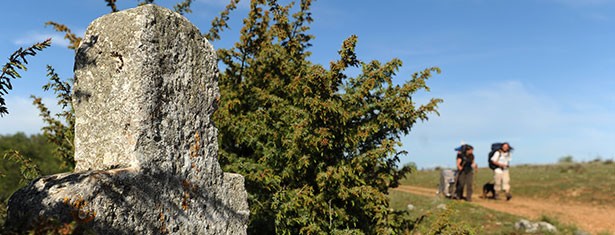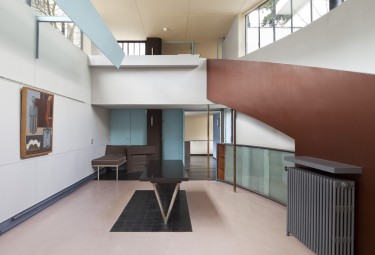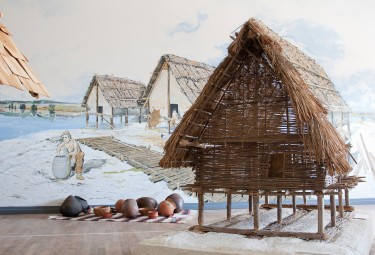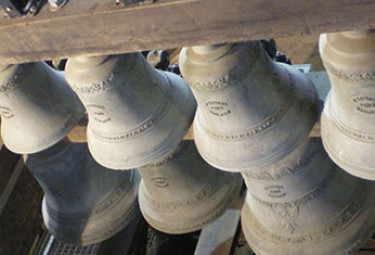The routes of Santiago de Compostela in France

Summary
Throughout the Middle Ages, Santiago de Compostela was a major destination for countless pilgrims from the whole of Europe. To get to Spain, the pilgrims had to go through France and cross the Pyrenees. The four main routes started from Paris, Vézelay, Le Puy and Arles. The routes are studded with pilgrimage churches, sanctuaries, hospitals, bridges and crosses, bearing witness to the spiritual and physical aspects of the pilgrimage. While the pilgrimage was a spiritual exercise and demonstration of faith, it also influenced the secular world and played a decisive role in the birth and spread of cultural values and the arts.
The listed French routes extend the inscription of the old city of Santiago de Compostela in 1985 and of the famous “Camino francès” in Spain in 1993. The listed French route includes 64 buildings, 7 built complexes, and 7 stretches of the route from Puy-en-Velay (GR®65).
Criteria
Criterion (ii): The pilgrimage route to Santiago de Compostela played a crucial role in the exchange and development of religious and cultural views during the Middle Ages, as illustrated by the monuments selected in France. The large sanctuaries cited in the Codex Calixtinus, hospitals where the pilgrims could receive treatment, bridges and roads, or humble places of devotion, bear witness to the routes followed by the pilgrims and the conditions under which they travelled.
Criterion (iv): The spiritual and physical needs of the pilgrims going to Santiago de Compostela were met by a number of specifically created buildings, many of them on the French sections of the route. The large pilgrimage basilica churches, of which few remain, are notable examples of mediaeval architecture.
Criterion (vi): The pilgrimage is an almost universal aspect of human spirituality. The pilgrimage route to Santiago de Compostela bears outstanding witness to the influence of Christian faith on people from all social classes in Europe during the Middle Ages.
- Aquitaine: The cathedral of Saint-Front in Périgueux; the church of Saint-Avit in Saint-Avit-Sénieur; the abbey church of Notre-Dame de la Nativité in Le Buisson-de-Cadouin; the old cathedral of Saint-Jean-Baptiste in Bazas; the basilica churches of Saint-Seurin and Saint-Michel and the cathedral of Saint-André in Bordeaux; the former abbey of Notre-Dame de la Sauve-Majeure and the church of Saint-Pierre in La Sauve; the church of Notre-Dame-de-la-Fin-des-Terres in Soulac-sur-Mer; the church of Sainte-Quitterie in Aire-sur-l’Adour; the bell-tower/porch of the old church in Mimizan; the abbey of Saint-Jean in Sorde-l’Abbaye; the abbey of Saint-Sever; the cathedral of Saint Caprais in Agen; the cathedral of Sainte-Marie in Bayonne; the church of Saint-Blaise in L’Hôpital-Saint-Blaise; the gate of Saint-Jacques in Saint-Jean-Pied-de-Port; the church of Sainte-Marie in Oloron-Sainte-Marie
- Auvergne: The Hôtel-Dieu and the cathedral of Notre-Dame in Le Puy-en-Velay; the church of Notre-Dame-du-Port in Clermont-Ferrand
- Basse-Normandie: Le Mont-Saint-Michel*
- Burgundy: The priory church of Sainte-Croix-Notre-Dame in La Charité-sur-Loire; the church of Saint-Jacques in Asquins; the basilica church of Sainte-Madeleine in Vézelay
- Centre: The collegiate church of Saint-Etienne (formerly the collegiate church of Saint-Jacques) in Neuvy-Saint-Sépulchre; the cathedral of Saint-Etienne in Bourges
- Champagne-Ardenne: The basilica church of Notre-Dame in L’Epine and the church of Notre-Dame-en-Vaux in Châlons-en-Champagne
- Ile de France: The Saint-Jacques tower, remains of the old church of Saint-Jacques-de-la-Boucherie in Paris
- Languedoc-Roussillon: The former abbey of Gellone in Saint-Guilhem-le-Désert; the Devil’s bridge between Aniane and Saint-Jean-de-Fos and the old abbey church of Saint-Gilles in Saint-Gilles-du-Gard
- Limousin: The church of Saint-Léonard in Saint-Léonard-de-Noblat
- Midi-Pyrénées: The church of Notre-Dame de Tramesaygues in Audressein; the old cathedral and cloisters, as well as the cathedral of Notre-Dame-de-la-Sède, the episcopal palace and ramparts in Saint-Lizier; the abbey church of Sainte-Foy and the bridge over the Dourdou in Conques; the old bridge in Espalion; the bridge over the Lot in Estaing; the “pilgrims’” bridge over the Boralde in Saint-Chély-d’Aubrac; the old cathedral of Notre-Dame, the paleochristian basilica and chapel of Saint-Julien in Saint-Bertrand-de-Comminges; the basilica of Saint-Just in Valcabrère; the basilica of Saint-Sernin and the Hôtel-Dieu-Saint-Jacques in Toulouse; the cathedral of Sainte-Marie in Auch; the bridge of Artigue or Lartigue between Beaumont-sur-l’Osse and Larressingle; the collegiate church of Saint-Pierre in La Romieu; the cathedral of Saint-Etienne and the Valentré bridge in Cahors; dolmen no. 2 of Pech-Laglaire in Gréalou; the hospital of Saint-Jacques in Figeac; the church of Saint-Sauveur and the crypt of Saint-Amadour in Rocamadour; the Hospice du Plan and the chapel of Notre-Dame-de-l’Assomption, known as the chapel of the Templars, in Aragnouet; the parish church of Saint-Jean-Baptiste* in Gavarnie; the church of Saint-Laurent in Jezeau, the church of Saint-Jacques de Cotdoussan in Ourdis-Cotdoussan; the church of Notre-Dame-du-Bourg in Rabastens; the abbey church of Saint-Pierre and its cloisters in Moissac
- Picardy: The cathedral of Notre-Dame* in Amiens, the parish church of Saint-Jacques le Majeur and Saint-Jean-Baptiste in Folleville, and the parish church of Saint-Jacques in Compiègne
- Poitou-Charentes: The church of Sainte-Eutrope in Saintes, the royal abbey of Saint-Jean-Baptiste in Saint-Jean-d’Angély, the church of Saint-Hilaire in Melle, the church of Saint-Pierre in Aulnay, the church of Saint-Hilaire-le-Grand in Poitiers, the former pilgrim hospital in Pons
- Provence-Alpes-Côte d’Azur: The church of Saint-Honorat in Arles*
- Languedoc-Roussillon and Midi-Pyrénées: The route between Nasbinals and Saint-Chély-d’Aubrac (17 km)
- Midi-Pyrénées: The sections between Saint-Côme-d’Olt and Estaing (17 km), between Montredon and Figeac (18 km), between Faycelles and Cajarc (22.5 km), between Bach and Cahors (26 km), and between Lectoure and Condom (35 km)
- Aquitaine: The route between Aroue and Ostabat (22km)
*listed first as a world heritage site and then re-inscribed as part of the Routes of Santiago de Compostela in France.
- Année d'inscription : 1998
- Critères d'inscription : ii, iv, vi
- Superficie du bien inscrit : sans objet
- Localisation : Regions of Auvergne-Rhône-Alpes, Bourgogne-Franche-Comté, Centre-Val-de-Loire, Grand-Est, Hauts-de-France, Ile de France, Normandie, Nouvelle-Aquitaine, Occitanie et Provence-Alpes-Côte d'Azur
- Coordonnées DMS : N45 11 2.6 E0 43 22.6
- Registration year : 1998
- Registration criterion : ii, iv, vi
- Area of the inscribed : sans objet
- Location : Regions of Auvergne-Rhône-Alpes, Bourgogne-Franche-Comté, Centre-Val-de-Loire, Grand-Est, Hauts-de-France, Ile de France, Normandie, Nouvelle-Aquitaine, Occitanie et Provence-Alpes-Côte d'Azur
- Coordinates DMS : N45 11 2.6 E0 43 22.6





